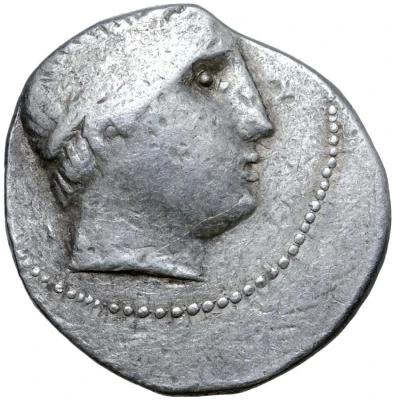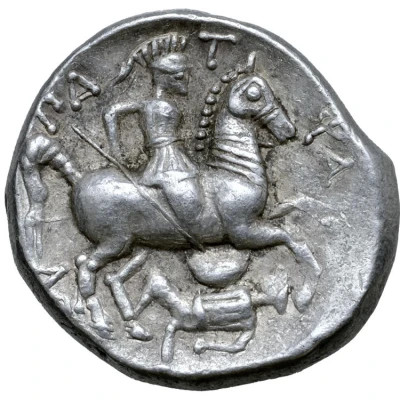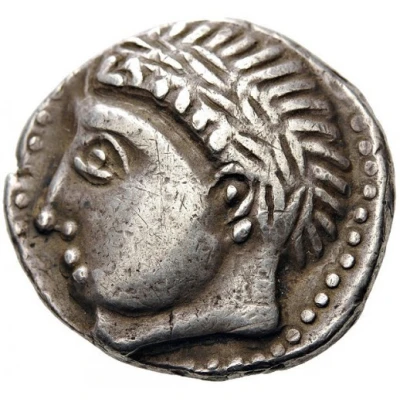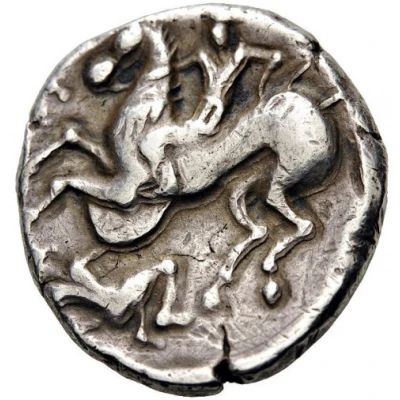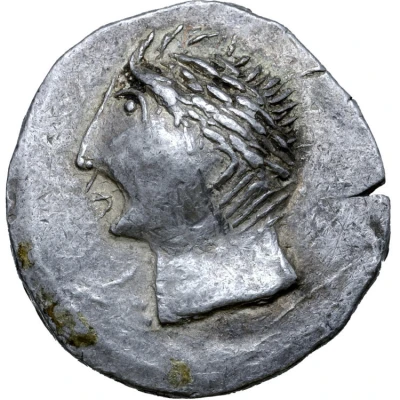
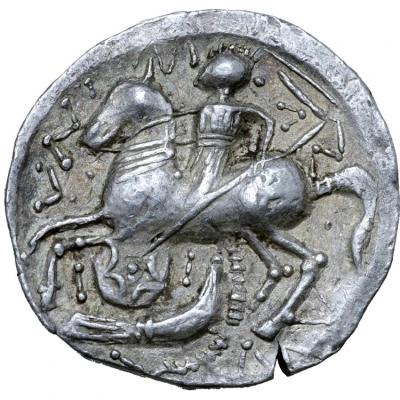

© Roma Numismatics Limited
Tetradrachm Patraos Type 340 BC - 315 BC
| Silver | 12 g | 23 mm |
| Issuer | Agrianes (Thracians) |
|---|---|
| Type | Standard circulation coin |
| Years | 340 BC - 315 BC |
| Value | Tetradrachm (4) |
| Currency | Drachm |
| Composition | Silver |
| Weight | 12 g |
| Diameter | 23 mm |
| Shape | Round (irregular) |
| Technique | Hammered |
| Demonetized | Yes |
| Updated | 2024-10-09 |
| Numista | N#188433 |
|---|---|
| Rarity index | 100% |
Reverse
Armored cavalryman galloping left, spearing fallen soldier holding Macedonian shield. Fallen soldier is highly stylised. Garbled inscription.
Comment
Imitation of Tetradrachm of Patraos from Paeonia.Kostial lists weights between 11.78-12.88g
The imitations of Patraos are among the earliest of all Balkan imitations of Greek coins (c. 340-315 BC). 34 specimens of this type appeared in the great Paeonian Hoard (IGCH 410), buried ~315 BC. It is likely that they were produced during Patraos’s lifetime, at the same time with the originals, but ceased soon afterwards. Attributed to the Agriones celts living between the rivers Strymon and Axios in southern Bulgaria (Gerassimov 1963). They preceded the more numerous imitations of Philip II, produced by the Getae in Dacia to the north. (Source: CCCBM I)
There are known pieces overstruck on earlier types:
• Alexander III coins with eagle reverse (Pegan 1968, 103-4)
• Dyrrhachium coins (Youroukova 1969, 1970).
References:
Cf. Paeonian Hoard T. 9, No. 514
Cf. Peus 311, 31 October 1984, lot 26
Examples of this type:
• Example #1 (11.79g, 27mm, 9h; Very Fine):
© Image courtesy of Roma Numismatics Limited
◦ Ex-Hermann Lanz Collection; published in Kostial #1004;
◦ Auctioned by Roma Numismatics Ltd, Auction XVIII, 29 September 2019, lot 243. Sold for 750 GBP.
◦ Auctioned by Numismatik Lanz München, Auction 58, 21 November 1991, lot 34.
• Example #2 (12.89g, 25mm, 3h; Near Extremely Fine):
© Image courtesy of Roma Numismatics Limited
◦ Ex-Hermann Lanz Collection; published in Kostial #1005;
◦ Auctioned by Roma Numismatics Ltd, Auction XVIII, 29 September 2019, lot 260. Sold for 2,200 GBP.
Interesting fact
One interesting fact about this coin is that it features a unique blend of Greek and Thracian elements in its design. The obverse side of the coin depicts a portrait of a Thracian king, while the reverse side features the image of a sitting Apollo, a common motif in Greek coinage. This blending of cultural influences reflects the complex history of the region and the interactions between the Thracians and the Greeks.
